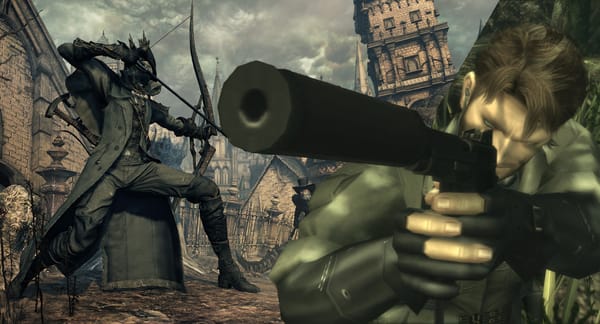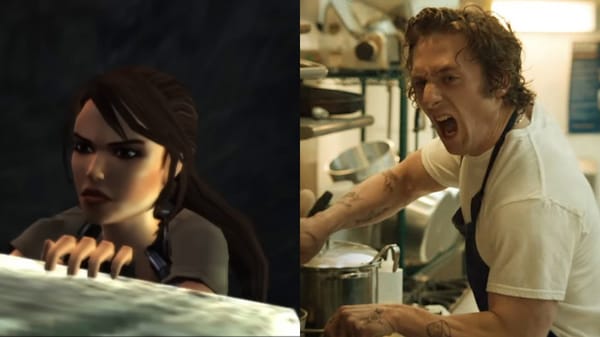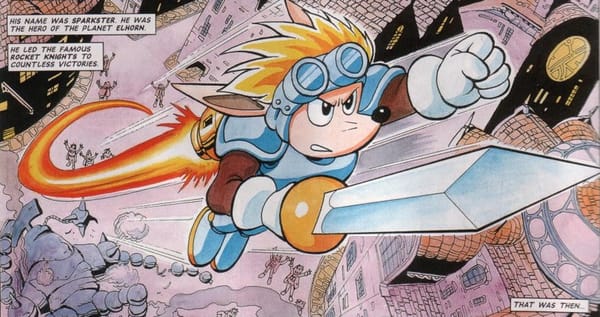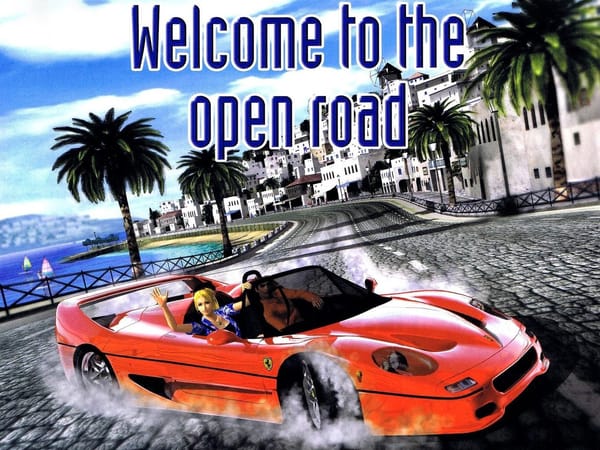Emulation returns to Xbox and Baroque returns to the Saturn
Plus the "we have the Analogue Pocket at home" of retro handhelds and a groundbreaking IBM PC emulator.
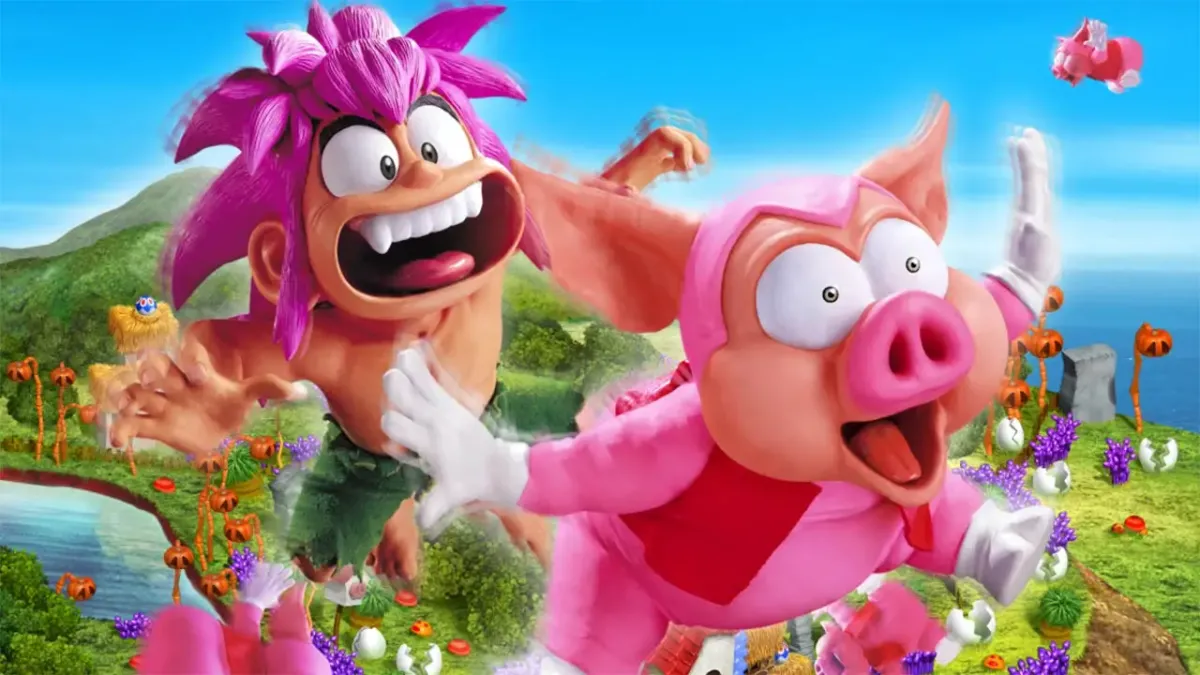
Gex. Tomba. Clock Tower. Dino DNA! This week Limited Run Games announced a doozy of an expansion to its Carbon Engine retro revival lineup, bringing back several classic games through emulation. Around the same time, Digital Eclipse announced a new documentary-in-game-form for Karateka, Jordan Mechner’s pre-Prince of Persia action game, given the same loving treatment as its Atari 50th collection. It’s been a pretty great week for commercial emulation projects.
Of those announcements, Clock Tower is the one I’m most excited to see. The Super Nintendo horror game was never officially translated into English, and it feels like efforts to translate and emulate overlooked gems just like it are really gathering speed. As much as I love filling out the Emulation Station portion of this newsletter with fan projects every issue, I would love to see it end up a balanced mix of paid, licensed translations and fan ones.
Will Nintendo ever admit it fucked up by not licensing and releasing the Mother 3 translation? Probably not! But are more publishers starting to see the value of “just” re-releasing their back catalog on new systems through emulation and translating them for an audience that will absolutely pay for games they’ve never been able to buy before? Definitely. We’re making progress.
I haven’t had much time for gaming this week, but I did spend a little emulation time with the Game Boy Color Metal Gear Solid on the Analogue Pocket. It’s one of those games that really proves how much developers had to crank up the color saturation to combat the GBC’s dim screen; boy is it over-the-top vibrant. Cool game, though! I skipped right to it over the 2D originals because Frank gave me permission. It does an impressive job of shrinking MGS down to a tiny screen and about 10 fewer buttons than it usually has to work with.
As I finish up this issue I’m trying and failing to avoid being distracted by Heathers, on in the background, so I think it’s about time to get this show on the road with another guest column. The cyber road. 😏
Guest.cue: JMC4789 logs into Mega Man Network Transmission
JMC4789 is a longtime contributor to the Dolphin emulator and co-author of the monthly Dolphin Progress Report. Since it began publishing regularly in 2014, the Progress Report has excelled at breaking down the technical complexities of emulation, setting a standard many other projects have since followed. Since JMC knows his way around Dolphin, this time the ROM trivia is included in the write-up. Thanks JMC!
Mega Man Network Transmission | 2003 | Platform: GameCube | Developer: Arika / Capcom | Action-platformer
A lot of times, I've been told that I should play a game for the first time on the original console. But I've found the opposite can be true: sometimes a game looks beautiful at higher resolutions not possible on original hardware, or maybe it suffers from performance issues, or the controls can be remedied through emulation to make a game easier to play. Mega Man Network Transmission doesn't entirely fall into any of those categories — it's a game most people would probably say isn't worth playing at all.
As a kid I only knew of it through an X-Play review that said it "squeaks by" with a 2/5. Our paths crossed in 2014 as I was falling into my role on Dolphin as a trusted issue reporter. GameCube games were way cheaper back then, so I quickly built a collection for testing. Mediocre games like Mega Man Network Transmission would rarely go above 5 dollars.
Its "claim to fame" in Dolphin at the time was that it used GameCube GPU features called "Line-Width/Point Size" for special effects. Nowadays, Dolphin convert the lines/points into strips of polygons via geometry or vertex shaders and they render fine, but at the time not all of Dolphin's graphics backends knew how to handle them, and I was supposed to capture a graphics fifolog for automated testing.
I could test the effects immediately, as Mega Man's "spawn in" animation uses them. That meant my job was done… but I kept playing after the issue report to see what else the game had to offer. I decided I wanted to prove how great of a player I was by making it through this notoriously difficult game. And then the first boss absolutely rocked me. After a fancy cutscene, the boss killed me in eight seconds flat.
The game only lets you save when you exit levels, so I had to start all over. Mega Man's default weapon, the buster, was incredibly weak and did almost nothing to the boss. You had to collect weapon chips by quickly defeating enemies to do much of anything, and further upgrades were usually hidden along dangerous alternate paths with harder jumps and spikes that could eat up lives. At this point it was personal.
The first boss killed me at least half a dozen more times before I took him down. Then it was on to another linear stage and another bonecrushingly hard boss. I was losing hope in the game, but then something weird happened — the difficulty actually eased off and the game world opened up. I could start farming weapon chips from enemies to expand my options and bulk up my HP and armor. The bosses I'd defeated got sent to a "battle simulator" where you can farm their powerful chips. In the simulator I was able to experiment and figured out that the bosses were quite easy once you knew how to dodge a few powerful attacks.
At that point I realized emulation could really enhance Network Transmission. I know a lot of people consider savestates to be cheese and ruin the sanctity of a game. But I have to stress that Mega Man Network Transmission is mean, and a simple savestate before a boss can open up your options tremendously and save you from the drudgery of losing everything at the hands of a cheap fight. I'm not going to lie and say the game is perfect after this. There are still difficulty spikes, but if you can power through the intro and the occasional blemishes, you'll find a unique take on 2D Mega Man that feels timely today with the revival of Mega Man Battle Network. Just don't be afraid to use savestates. — JMC4789
The Big Two
1. The Xbox emulation scene strikes back

In my April 16 ROM I wrote about how Microsoft kicked emulators off Xbox unless you played them in “dev mode” where you can boot effectively any software; it was basically the end to convenient emulation on the consoles. Bad! Now, three months later, the scene has returned with a green lightsaber a clever new way to get emulators to run on Xbox in regular ‘ol “retail” mode.
Ars Technica’s Kyle Orland has the goods, reporting that a new bundle available via the $2 UWeaPons Store Patreon lets you install Dolphin, Xenia, RetroArch and XBSX2. The combo package is one element of a new technique to avoid Microsoft’s automatic detection of the emulators to prevent them from being blocked. Patreon backers get their emails put on a whitelist that allows access to the apps, so every time Microsoft nukes the package or the account that uploaded it, the devs can spin up a new account and copy the whitelist over.
Since the Ars article on July 10, the battle has escalated big time: the emulator packages have been rapidly blocked, re-uploaded, blocked again, and rejiggered to try to avoid Microsoft’s detection.
“The first upload lasted roughly 2 days, which is less than we had hoped but more than how short they were lasting during the height of Microsoft's intervention,” one of the developers, SirMangler, told me. “Then for a while it was a day, then 8 hours, and then a few days ago we encountered the fastest takedown we've heard of in the 2 years of this Xbox Emulation community, an hour.”
Their best guess, currently, is that Microsoft is manually taking down the packages. How are they finding the uploads so quickly? Well… maybe they backed the Patreon?
“Assuming a Microsoft employee didn't take it on themselves to sign up, I would love to see what it looked like getting approval to spend $2 of their budget on us like that,” SirMangler said.
Currently the team is still trying out ways to keep the emulators available for longer; how that goes will determine whether they keep at it. “If the apps can't be used after say 8 hours of installing them, then I'm not sure there will be enough interest, and frankly I wouldn't want to do daily uploads indefinitely,” SirMangler said. “It's a question I'll have to consider carefully once we have learned what we can from our testing and have seen how long we can keep the apps running.”
2. Evercade gets a new pair of Pockets

There’s a new retro handheld to pay attention to, and for a moment I thought maker Hyper Mega Tech was yet another Chinese pop-up I hadn’t heard of before, like I wrote about a few months back. Nothing wrong with those — some of them are quite good, even! — but this is a slightly different beast, it turns out. The new, $59 Super Pocket is an Evercade spin-off from British Blaze Entertainment, with a design that strikes me as the “We have a Pocket at home” version of Analogue’s luxurious FPGA handheld.
Despite not being Evercade branded, the Super Pocket can run Evercade carts, which are typically rom collections but also include some modern indies. The real marketing push here, though, is a pair of licensing tie-ins with Capcom and Taito, with 12 games built-in on the former and 17 on the latter. I don’t know Taito’s library as well, but the Capcom picks, at least, are about as standard as you get: Street Fighter 2 Hyper Fighting, 1942, Ghouls ‘n’ Ghosts. This thing feels more like a play for impulse buys at stores like Target (with a bump in brand recognition thanks to a Capcom logo) than for emulation enthusiasts. I didn’t see an arcade emulator license on Evercade’s site and there’s no mention on the Hyper Mega site either, so it may be done in-house, with a debt to MAME I imagine. Good enough to accurately emulate some of the most well-known games of all time, surely.
I kinda dig the soft touch plastic look and bright colors, even if it reinforces the budget feel of the whole thing. The limited edition transparent models are absolutely bait for ‘90s kids and have grabbed my attention.
Ultimately I feel like there are probably a dozen better ways to play the games on these systems, but with this spin-off brand Evercade has now essentially backdoored itself into having a vertical Game Boy-like form factor, and parent company Blaze Entertainment continues to make licensing and partnership deals to release more and more classic games on its cartridges. In light of the Video Game History Foundation’s study finding that about 87% of classic games released in the US are out of print, it’s great to see a company using emulation to support physical re-releases of games that were long out of print. Since Nintendo has effectively killed the Virtual Console years ago… is anyone else really even in this space anymore?
Patching In

MartyPC debuts cycle-accurate 8088/8076 emulation - I completely missed this accomplishment from several weeks back, but it’s a big one! MartyPC is a new IBM PC emulator that started development last year, and now can accurately run programs written for the Intel 8088 and 8086 CPUs that other emulators don’t quite get right, as detailed in the linked post by Viler.
One example: Most PC emulators just render the “active raster area” but leave out the overscan area beyond that. Mostly not a big deal… except for in some games, which rely on how the CGA output would work on a real monitor. Quoting Viler: “The active video region can be moved around the monitor's display area by reprogramming the [cathode ray tube controller], which is one way to manipulate the screen without expensive VRAM updates. For instance, Lost Tomb exploits this for its screen-shaking effect, when you've been clumsy enough to trigger an earthquake.”
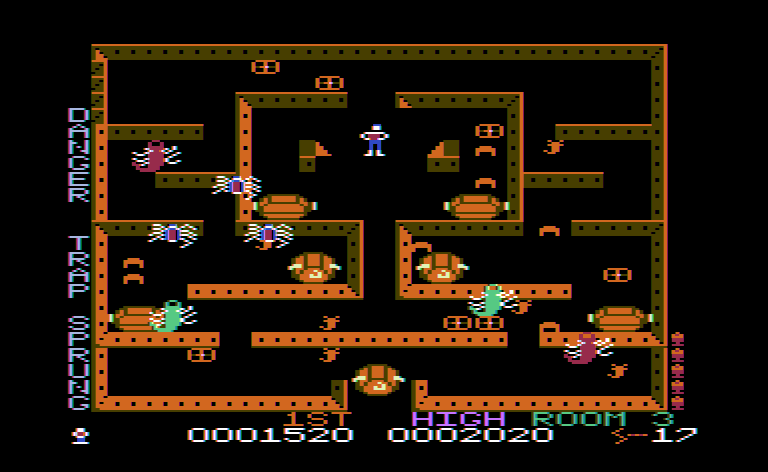
There’s a lengthy set of details on the Github and MartyPC is still in development, with an update just last week bringing more accurate composite CGA colors.
PCSX2 adds “fancy downscaling shaders” - An addition to PCSX2 that started last December was merged in a few days ago, adding cleaner image downscaling if you play games at super high resolutions. “At some point when internal resolution is high enough compared to the viewing area, bilinear filter stops being useful and aliasing occurs,” programmer KrossX writes. Zoom in on the windows in these screenshots to see the difference: 8x scaling, 8x scaling with rotated grid supersampling.
Yuzu fixed a lot in June, but most importantly, eyebrows - Here’s what most people probably care about, first: more small Zelda improvements!
Yuzu’s devs fixed some particle issues in TotK, including the teleporter effect and snow/rain particles moving more slowly than they should.
New SSL support enables connection to Mario Maker 2 private servers. Neat!
Xenoblade 3’s eyebrows shall wiggle like this no more. Comedy or tragedy?
Core Report

- The N64 core boots its first game — It’s aliiiiive. “The first game is working on the #MiSTerFPGA N64 core, much faster than I expected. I also added audio functionality to the core. Have fun!” writes programmer Robert Peip. The first functional game: Namco Museum 64. Wakka wakka wakka.
- Remote MiSTer extension gets remotier - If you access your MiSTer over our home network, this tool essentially adds a remote control to your phone (or other device). You can change volume, take screenshots, launch games, basically everything. Except now, well, more things, including launching scripts and using the N64 and Neo Geo CD cores. Speaking of…
- Neo Geo CD goes official - The Neo Geo CD core has been around for awhile, but it’s finally been promoted to official status and integrated into the main MiSTer branch. And following the white rabbit further…
- Neo Geo Pocket gets a stable game - Jotego originally hoped to have a beta of the MiSTer Neo Geo Pocket core finished on June 2, but it’s required a bit more work to get there. After successfully booting games, Jotego has noted one is running stably. Unless you really want to play B&W shōgi, this is more of a “good progress!” sign.
Translation Station

Baroque for Sega Saturn - Last year, the PS1 horror roguelike got a fan translation courtesy of romhacker Plissken. Plissken used an existing translation from the website The Nerve Tower, but did the hard work of implementing it into into the game. 11 months later, Plissken’s back with a hack of that same translation, but for the Saturn rather than the PS1. It’s the same game, but according to The Nerve Tower, “the [PS1] port ended up being a much weaker experience than its Sega Saturn progenitor.” A few reasons:
“The most striking change in the Playstation version is the total loss of the film noir aesthetic the original game was conceived around. Instead of stark contrast, heavy use of shadows, and bold lighting, the PS1 port settles for murky, uniform lighting with little contrast.”
“The characters and Grotesques have also received noticeable downgrades, with sprites being stretched considerably.”
“A couple of new features have been added in order to compensate for the port's quality, but most of them serve only to detract from the original's charm.”
So if you wanna play a version of Baroque… this is really the one.

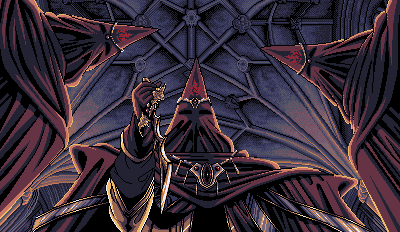
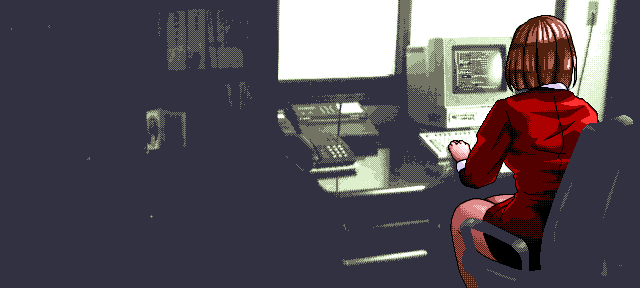
Sweet dreams. . .
